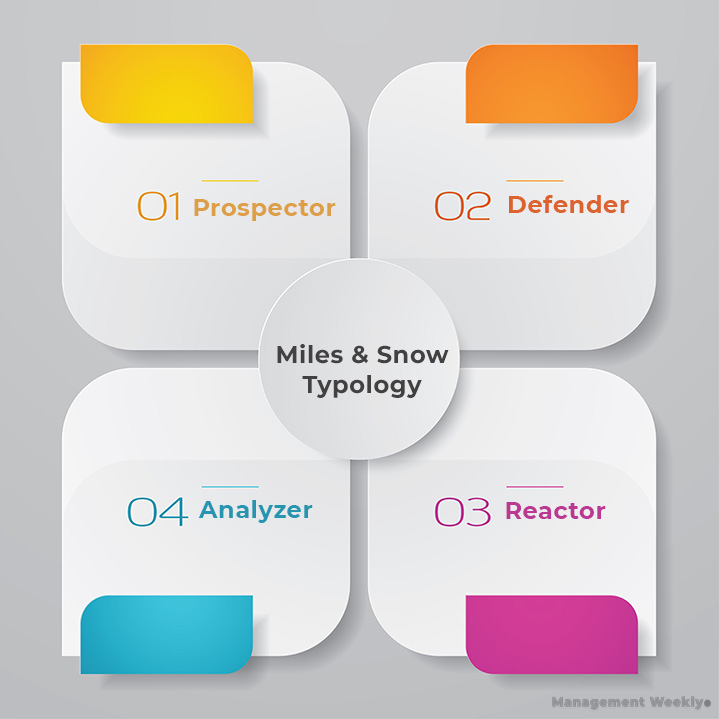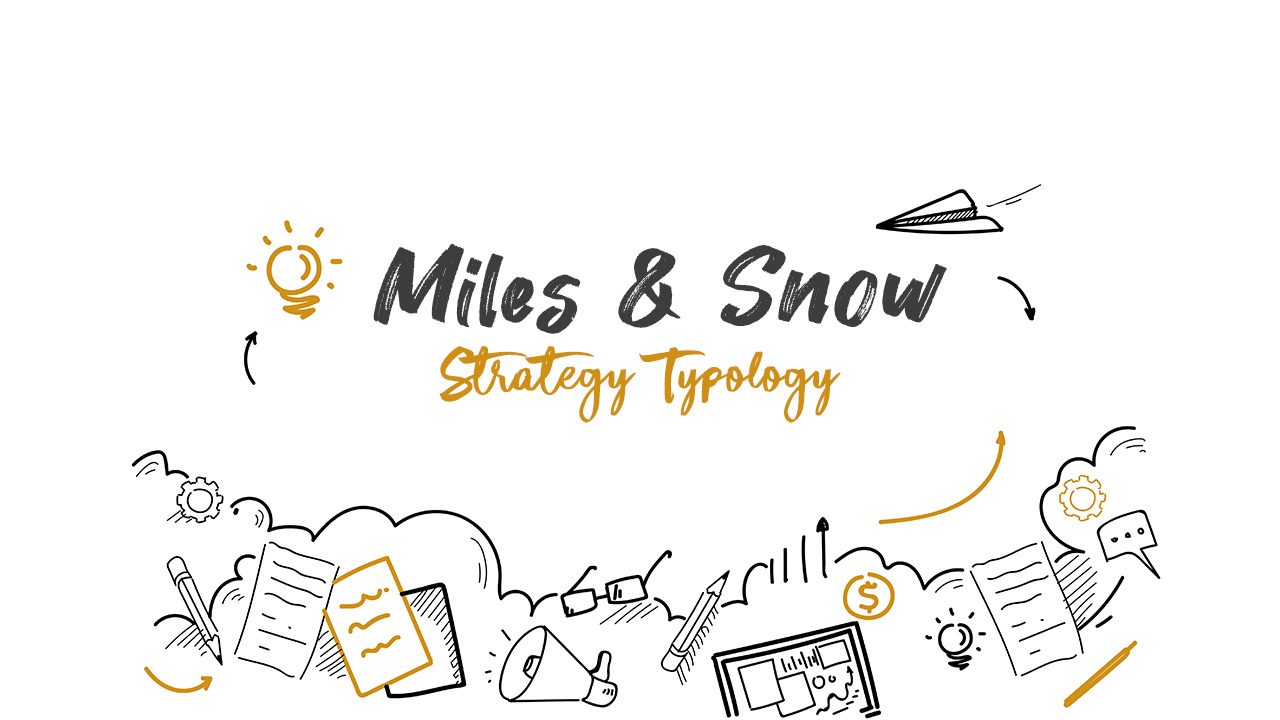The Miles and Snow’s strategy typology is an important tool to analyze the types of strategy based upon contingent factors inside and outside the firm. Consequently, they posit strategy as a function of three core organizational problems – entrepreneurship, operational, and administration. Let us take a look at this typology to understand it better.
Contents
The basic managerial problems
There are three kinds of basic managerial problems. Miles and Snow discussed these problems within their framework. There are essentially three types of problems. These are enlisted below:
- Entrepreneurial problems
- Engineering problems
- Administrative problems
Entrepreneurial problems
An entrepreneurial problem is the problem of a business venture. Businesses have the option of either using the current product mix. Alternatively, they could also seek out new product-market. Firms at one end of the entrepreneurial scheme can be seen as extremely passive in their new product development. On the other hand, forms that are extremely entrepreneurial will take extreme risks and develop cutting-edge products. It may appear to be fancy to go for the ‘next big idea’ and stay entrepreneurial. However, it is not a great idea all the time. And really, firms need to balance out both these approaches.
Engineering problems
The engineering problem deals with how to achieve the strategy. In other words, it is the successor to the entrepreneurial problem. We can also say that engineering problem tries to find ways to solve the entrepreneurial problem. Researchers have said that the engineering problem focuses on ways to utilize resources, Process improvement, and expertise development. It takes a lot of deliberate planning and proactive measure to develop roadmaps for new technologies like AI. It could also include decisions like incremental innovation versus radical innovation.
Administrative problems
Consequently, we come to the administrative problems. Administrative problems talk about the execution of the strategies. Administrative problems present the challenges due to the structures and processes inside the organization. In order to achieve the organizational goals, these need to be maneuvered. They present a challenging task in front of the managers. The solutions need to cater to the previous decisions of the entrepreneurial problem as well as the engineering problem.
Miles and Snow’s Strategy Typology

Miles and Snow’s strategy typology proposed that firms may employ different strategies but they can be better understood through a classification. They proposed that there are four different types of strategies. This classification helps us to understand the strategic development process. On one hand, we can explain why a firm took a particular stance based upon its circumstances. On the other hand, we can predict or prescribe how a firm should behave given a certain set of circumstances.
- Prospector – the prospector organizations look out for new ideas. This type of organizations they have loved their strategy on developing new products. In certain business context, prospector strategy may be the best one. Most notably, these types of business strategy work best in a market that is highly dynamic. For example, if we consider the mobile phone industry. It’s a constantly changing industry, with new models being launched every month. Moreover, the success of models cannot be predicted entirely. Therefore, companies invest a lot of money into the research and development.
- Defender – The defender companies are those that also faced entrepreneurial challenge, but they tackle it in a very different way. These companies tried to work that whatever technology they have. The defenders try to utilize existing technology to their advantage. This strategy works best in those environments where things are not changing rapidly. For example, if we consider a company that makes tuxedos. They may not invest a lot of money into developing new designs. They may even sell some designs that are 20 years old quite well. The defender forms generally look for achieving cost leadership.
- Analyzer – This type of organization tries to find a balance between prospector and defender. There are certain advantages and disadvantages to this kind of approach. Firstly, the analyzer type of organization can work with different business contexts. Secondly, some of the industries are difficult to classify as dynamic or static. They may have some features of both. Therefore, Analyzer forms tried to optimize the efficiencies of current products. Additionally, they also strive towards creation of new opportunities. These organizations also look for collaborations outside their firm.
- Reactor – We finally come to the least liked kind of strategy. However. This type of strategy may be a good fit depending on the situation. A reactive form is that which tries to react or adapt to the changing landscape. Although, being proactive can be good for you, sometimes it is not. These types of forms do not try to spend money on new product development. They also look for short term opportunities rather than long-term ones. It may seem counter-intuitive, but this is quite helpful sometimes. Consider an upcoming new technology like a virtual assistant. The cost of developing new technology like this could be in billions. However, it is much cheaper and efficient to adopt this technology when it has reached the market stage. It is also possible to deploy them through the XaaS platform and achieve the same result at a fraction of the cost.
Operationalizing the miles and snow strategy
Above analysis can give you some idea about which strategies may work better for specific situations. Additionally, you can also use a framework developed by Sollosy, Guidice and Parboteeah in 2018. They have proposed that the Miles and Snow framework can be combined with the literature on organizational ambidexterity. This would provide some actionable insights for the strategists.
The three managerial problems can be divided into 2 specific approaches each. It has been summarized in the table given below:
| Entrepreneurial | Engineering | Administrative |
| Exploration | Incremental innovation | Adaptation |
| Exploitation | Radical innovation | Alignment |
The table below summarizes their research findings:
| Entrepreneurial | Engineering | Administrative | |
| Prospector | Exploration | Radical Innovation | Adaptation |
| Defender | Exploitation | Incremental innovation | Alignment |
| Analyzer | Exploitation | Incremental innovation | Adaptation |
| Reactor | Exploration | Incremental | Adaptation |
A firm may choose to be a Prospector, Defender, Analyzer or Reactor. This choice can be driven by the type of approach a firm wants for each of the three problems.

4 thoughts on “Miles and Snow’s Strategy Typology”